Reload Slot Stack-member-number Command
T&Cs Reload Slot Stack Member Number Command apply. Bonus terms and conditions apply. 35x wagering applies. Read more about PlayGrand Casino: 50 Bonus Spins No Deposit Required! 18+, T&C Apply, New Customers Only. Read our full review. Full review go to casino.
- Reload Slot Stack-member-number Command Prompt
- Reload Slot Stack-member-number Command Generator
- Reload Slot Stack-member-number Command Block
- Reload Slot Stack-member-number Command Linux
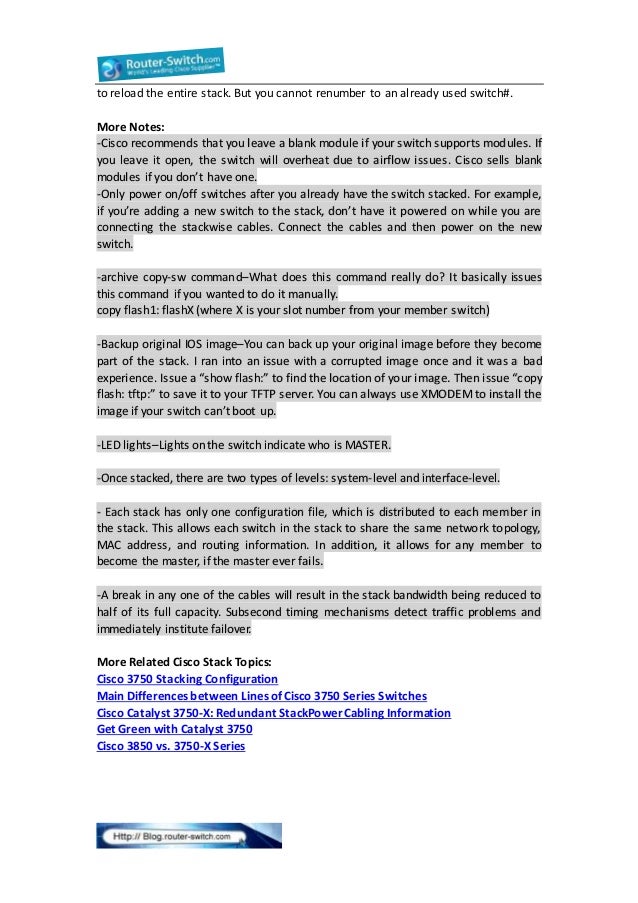
SWStack# reload slot X X also represents current switch stack member number. Use the same number as above. Once rebooted, the switch will now hold the new member number as long as it is not already in use. Red is now modular and uses commands + subcommands If you are confused, type in phelp command and if help command lists subcommands do phelp command subcommand p being short for your prefix, such as!,., ^.
.unlock or .u command used to fix stuck-in-combat problems preventing you from joining a scenario. One attempt every 30 seconds is allowed.
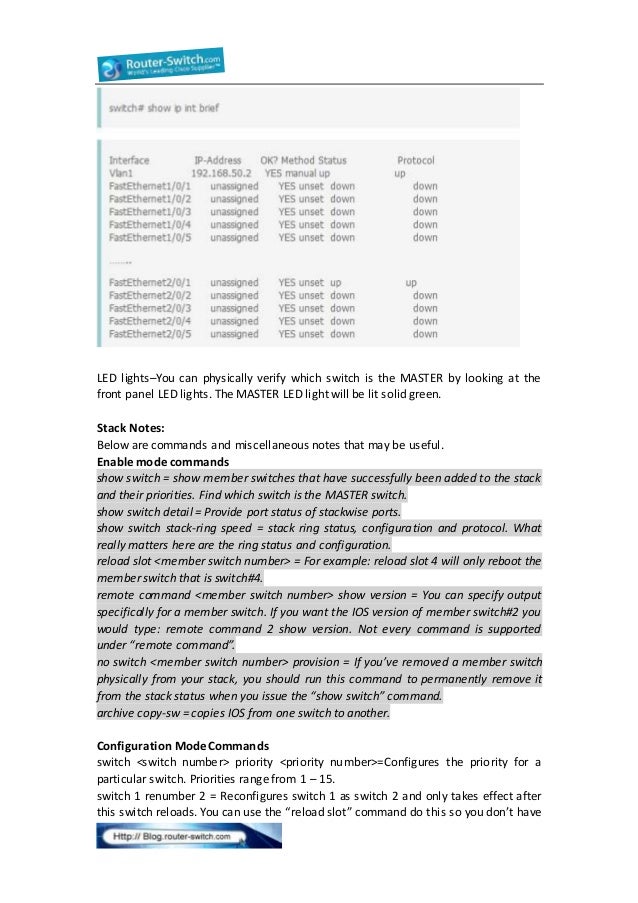
.gmlist or .gm command shows available Game Masters online.
.rules command sends a condensed list of in-game rules.
.assist command switches to friendly target's target.
.tellblock command allows you to block whispers from non-staff players who are outside of your guild.
.getstats command shows your own linear stat bonuses. (You must target yourself first!)
.standard command assigns Standard Bearer Title to the Player.
.ror command shows Help Files for RoR-specific features.
.changename command requests a name change, one per account per month. Keep in mind that you must be L40R40, and in your city (Altdorf/Inevitable City) to request a new name. ( .changename Newname)
.mindread command causes the target creature to broadcast its AI.
/reload or /rel command reloads/refreshes your UI. Quite often it gets rid of stuttering too.
.ab changelist command displays a list of changes made to the career on Return of Reckoning.
.rvrstatus or .rvr command lists all active zones.
.pug command lists the current 'pick-up group' scenario (a scenario only solo and duo queued players can join).
.respec gathering type this command to unlearn your gathering skills, and thus be able to learn a new one.
.respec crafting type this command to unlearn your crafting skills, and thus be able to learn a new one.
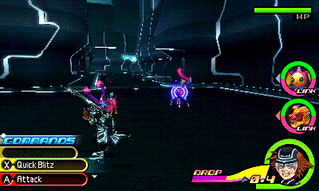
.guildinvolve to involve your guild in the current zone's campaign. Bonuses for the guild include: all RVR tagged guildies in zone have a 5% contribution bonus for the campaign, gain 5% more XP/INF/RR (which stacks with other bonuses like Potion of Acclaim), bag roll on lock increased by flat 50 points, and resource production from Battle Objectives is increased by 3% per guild involved. Cost is 30g, taken from guild vault. Unlocks at guild rank 14.
.claimkeep to claim the current zone's keep. Bonuses for the guild include: all of the incentives from involving in the campaign, plus the keep cannot de-rank below rank 4 if such rank is acquired. Cost is 80g, taken from guild vault. Unlocks at guild rank 14.
Deprecated Commands
.ab command reveals class's modifications specific to Return of Reckoning.
.ab exmode command enables experimental mode on the current target if the current class supports it.
Supported stacking topologies for HP 2920 switches are:
chain (not recommended)
ring (recommended)
For additional information on hardware configuration, see the HP 2920 Switch Installation and Getting Started Guide.
Ways to create a stack:
The deterministic method — by the sequence in which switches are booted. You choose which member becomes Commander.
The plug-and-go method — the stacking process determines which switch is the Commander. (Install a Stacking Module in each HP 2920 switch in the stack, enable stacking on each switch, connect them together in the desired stacking topology using stacking cables and power-on the switches.)
Install a Stacking Module into an HP 2920 switch and then boot the switch, as described in the HP 2920 Switch Installation and Getting Started Guide.
Make sure that stacking is enabled for the switch:
Enter the
show stackingcommand.If stacking is disabled, enter
stacking enable(in global config context). This command causes the switch to reboot.
When the switch finishes booting, enter the
show stackingcommand again. The switch now has the status of Commander, a Member ID of 1 (one) and a default priority of 128.To generate a stack ID, enter the following command:
(Optional) To have this switch retain its function as Commander through stack boots and other situations, increase its priority. The switch with the highest priority becomes Commander when all switches are booted simultaneously. Default priority is 128; priority can be set to any value between 1 and 255. For example, to increase a switch stacking priority to 255, enter the following command:
(Optional) Pre-configure the stack for the other switches that become members of the stack. You can assign a member number and a priority by using the following command for each switch:
HP Switch(config)#: stacking member[<n>type<JxxxxA>mac]<MAC-address>where:
n is the stacking member number for the switch
JxxxxA is the product number of the switch (required). Any HP 2920 model can be installed and assume this configuration. When you specify a value for this parameter, then only a switch of this specific model type can assume this configuration
(Optional)
MAC-addresscan be specified if you want a specific switch to assume this provisioned configuration. If this value is entered, then the type value for the switch that has this MAC address must be correct, or a configuration error is logged and the switch is not allowed to join the stack.
(Optional) You can pre-configure a priority for the member switch with the following command:
HP Switch(config)# stacking member<n>priority<x>where:
n is the stacking member number for the switch
x is the priority (1 – 255, default 128); must be less than the priority assigned to the Commander. Priority for the Standby should be the second highest in the stack. Member switches can remain at the default priority of 128.
NOTE: Configure the stacking type and priority with separate commands; for example.
HP Switch(config)# stacking member 4 type J9726AHP Switch(config)# stacking member 4 priority 100Connect the stacking cables to the module ports for the desired stacking topology. For example, plug ports 1 and 2 in a ring.
Install, but do not boot, Stacking Modules into the other switches that will be members of the stack.
NOTE: HP recommends that you create a ring topology for maximum throughput and resiliency of the stack. A chain topology is not recommended because any hardware or software failure in the stack causes lost ports, which increases the amount of time for recovery of full stack operation due to multiple reboots. See the HP 2920 Installation and Getting Started Guide for supported topologies.
Boot the Standby and Member switches. The second switch booted becomes the Standby; the remaining switches become Members when booted.
When all switches are booted, enter the
show stackingcommand to confirm that the stack is operating correctly. The following example shows four switches in a chain topology.
Four switches in a chain topology
Install, but do not connect with stacking cables, a Stacking Module in each HP 2920 switch that will be in the stack, as described in the HP 2920 Switch Installation and Getting Started Guide.
Make sure that stacking is enabled for each switch.
Determine this by connecting a console to each switch and entering the command
show stackingfrom the switch CLI.If stacking is disabled, enter the command
stacking enable, which causes the switch to reboot.
NOTE: By default, stacking is enabled on all HP 2920 switches when a Stacking Module is installed before the switch is powered up for the first time, but if the switches were powered up without a Stacking Module installed, stacking is disabled
If you are connecting stacking cables during/after switch boot, then multiple stacks can form (plug-and-go method).
Connect the stacking cables between the switches to form the desired stacking topology, then power on all switches.
When the switches that are stacked together complete booting up, one of the switches is elected as the Commander, one of the switches is elected as the Standby, the remaining switches become Members of the stack, and the stack becomes fully operational.
To find out the roles of the switches in the stack, connect a console to any switch and enter the show stacking command. You can use the MAC address and other information in the display to determine the role of each of the switches.
HP Networking stacking enables adding switches to the stack while the stack is operational, so long as the maximum number of four switches in the stack is not exceeded.
Provision[] the stack for the new switch with the following command:
HP Switch(config)#: stacking member[<n>type<JxxxxA>mac]<MAC-address>where:
nis the stacking member number for the switchJxxxxAis the product number of the switch (required). Any HP 2920 model can be installed and assume this provisioned configuration. If you specify a value for this parameter, then only a switch of this specific model type can assume this provisioned configuration(Optional)
MAC-addresscan be specified if you want a specific switch to assume this provisioned configuration. If this value is entered, then the type value for the switch that has this MAC address must be correct, or a configuration error is logged and the switch is not allowed to join the stack.
(Optional) You can pre-configure a priority for the member switch by entering this command:
Where:
n is the stacking member number for the switch.
x is the priority (1 - 255, but should be less than the priority assigned to the Commander — the priority for the Standby should be the second highest in the stack; member switches can be left at the default priority value of 128).
NOTE:
You must configure the stacking type and priority separately.
When the new switch has been provisioned in the stack, a complete configuration can be applied to the switch even before it is physically connected to the stack, connected to the network, and powered up.
Power on the new switch. The new switch does not become a member of the stack unless stacking has been enabled on the switch.
Install a Stacking Module into the new switch, connect the switch into the stack using the stacking cables, and form the desired stacking topology.
When the switch has finished booting, establish a console session with it and, from the config context, issue the command to enable stacking:
This causes the switch to reboot. When the reboot is complete, the switch is a member of the stack with the attributes that you provisioned for it.
Confirm that the switch is now a member of the stack by issuing a
show stackingcommand from a console session with any of the switches in the stack. The command output should show that the new switch is a Standby or Member of the stack with the member number and priority that you assigned to it.
When you add the switch to the stack, the following occurs:
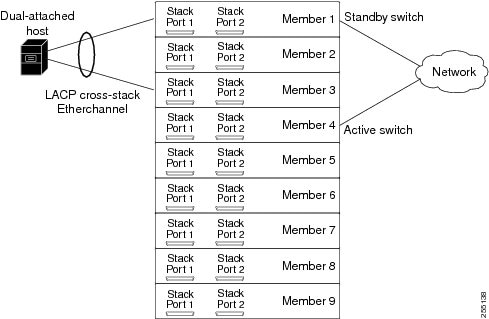
The Stack Revision Number is incremented by one.
The Commander verifies that the new switch has the same switch software as the other switches in the stack, and downloads the software to the new switch if it does not. When downloading new software, there is an automatic reboot.
The Commander assigns the Stack ID and a Member ID to the new switch.
A stack ID is assigned, even if the switch is later disconnected from the stack.
The member's console is automatically redirected to the Commander.
The OOBM IP address for that member is no longer reachable.
You can remove a switch from the stack to be redeployed in another part of the network. The procedures vary depending on whether the switch is Commander of the stack or not.
Establish a console session with the stack using a direct console cable connection or telnet [or equivalent command line tool]. If using the console cable, connect it to the Standby.
Enter the following command to remove the switch from the stack:
HP Stack 2920(config)#: stacking member<n>removeThis causes the switch to lose its complete configuration and be removed from the stack configuration. A subsequent
show stackingcommand issued to the stack will show that the removed switch no longer exists in the stack.Power down the removed switch.
Disconnect the stacking cables from the removed switch and from the other switches in the stack.
Establish a console session with the stack using a direct console cable connection, telnet or equivalent. If using the console cable, connect it to a switch other than the Commander
Enter the following command to force Commander status over to the Standby switch:
This causes the Standby switch to take the role of the Commander and for a new Standby to be selected from the remaining member switches. The former Commander becomes a Member of the stack.
To remove the former Commander from the stack:
HP Stack 2920(config)#: stacking member<n>removewhere
nis the member number of the former Commander.Power down the removed switch.
Disconnect the stacking cables from the removed switch and from the other switches in the stack.
Reload Slot Stack-member-number Command Prompt
If you did not provision the stack for the switches when you first created the stack, members may not have acquired the desired member numbers; the stack members can be renumbered as described in the next example.
A four-member stack is used in the following example with switches A, B, C, and D. These switches are members 1, 2, 3, and 4, respectively. Switch B acquired member number 3 and switch C acquired member number 2.
To renumber stack members:
In the global config context, enter the
removecommand option for switch B (member 3) and switch C (member 2):All configurations on the removed member switch are deleted, not just the stacking configuration.
Enter the following command:
HP Stack 2920(config)#: stack member 2 type<B's type>mac-address<B's MAC address>This command clears the MAC address of the member 2 configuration to allow switch C’s MAC address to be entered in the next command, without a duplicate MAC address occurring in the stack.
Reboot switch B (new member 2) and then reboot switch C (new member 3).
To confirm that each switch now has the desired member number, enter the
show stackingcommand.
Restoring operation after power cord disconnection
If a power cord becomes disconnected from one of the switches in the stack, the stack operation is affected; stacking status of the switch that lost power is “Missing” but its record is retained in the stack configuration. The effect of the power loss depends on the role of the switch in the stack:
If the Commander loses power, the Standby switch takes over as the Commander and one of the member switches in the stack is elected as the new Standby.
If the Standby loses power, one of the member switches in the stack is elected as the new Standby.
For any switch that loses power, all its network ports and stacking ports are non-operational until power is restored to the switch and it rejoins the stack. This affects the stacking topology.
Reconnecting the power cord restores the operation of the switch; however, if the topology has 3 or more members and the switch was either the Commander or the Standby, it returns in a different role. In a 2-member stack, a Standby that reboots rejoins as Standby.
Restoring operation after disconnecting a stacking cable
Reload Slot Stack-member-number Command Generator
If a stacking cable becomes disconnected from one of the switches in the stack, the effect depends on the stacking topology in use:
Reload Slot Stack-member-number Command Block
Ring—There is little effect. The stack topology is temporarily changed to a chain topology. To recover, simply reconnect the stacking cable; this restores the ring topology and the previous stack configuration.
Chain—The following occur:
The smaller section (fragment) of the stack caused by the disconnection becomes
Inactive(theStack Statusvalue shown in the output of the show stacking command isInactive.If the two resulting fragments are the same size, the fragment that contains the Commander will be
Active, and the other fragment becomesInactive.CAUTION: This only occurs when OOBM is enabled and configured for all members of the stack. If OOBM is not enabled and configured for all members of the stack, then each fragment will be
Active. See OOBM and active and inactive fragments for more information.Both fragments will have a Commander and a Standby selected (if there is more than one switch in each fragment).
When the stacking cable is reconnected to reform the chain:
The Commander and Standby of the Active fragment retain those roles for the resulting stack. If the original Commander was not in that fragment, then the stack will have a new Commander when the stack is reformed.
The switches in the Inactive fragment reboot and assume their new roles in the reformed chain.
If a Stack Member fails, the effect on the stack depends on which member failed.
If the Commander fails, the Standby switch takes over as the Commander and one of the Member switches in the stack is elected as the new Standby. All network ports and stacking ports on the failed switch become non-operational.
If the Standby fails, one of the Member switches in the stack is elected as the new Standby. All network ports and stacking ports on the failed switch become non-operational.
If a Member fails, all network ports and stacking ports on that switch become non-operational.
If a Stack Member fails:
Physically remove the Stack Member from the stack.
Replace the failed Stack Member.
NOTE: HP recommends using the same type (product or 'J' number) switch as a replacement since all configuration information is retained.
If you are using the same type switch as a replacement:
Provision the new switch using the
stacking member Ncommand.Reconnect all Ethernet ports as they were on the failed switch.
If you are using a different type switch as a replacement:
Remove the failed switch from the stack configuration using the
stacking member N removecommand.Provision the new switch using the
stacking member Ncommand.Reconnect Ethernet ports and create a new stack configuration on the new switch.
If the replacement switch uses a different version of software, it will be updated automatically to match the software version running on the stack.
Replacing a failed stacking module is simpler than replacing a Stack Member since the switch configuration itself does not change. In this case, there is no need to re-provision the switch as a member of the stack. After you replace the stacking module, if the switch that experienced the module failure was Commander or Standby, the election of a new Commander and Standby is the same as described in Electing a Standby.
When two fragments have the same stack-id, the merge of the fragments is almost always allowed regardless of the merge policy. The Commander and Standby of the merged stack are selected based on the election rules. All switches in the previously inactive fragment or fragments reboot, and join the Active fragment as Members.
If both fragments are Inactive, then an election process occurs: the two (or more) Commanders in the fragments are compared, and the Commander is selected using the following criteria:
Highest Stack Rev.
If the stack rev is the same for both, then choose the switch with the highest configured priority.
If the priorities are the same for both, then choose the switch with the highest OS revision.
If the OS revisions are the same, then choose the switch with the longest uptime.
If the uptimes are the same, then choose the switch with the lowest MAC address.
The stack is essentially a single switch with the Commander unit controlling the management functionality, so the process of loading new software is identical to the process for a standalone HP 2920. (See “File Transfers” in the Management and Configuration Guide for information on downloading software.)
After new software is loaded on the Commander, the Commander installs the software on all the stack members; the loading process can take some time.
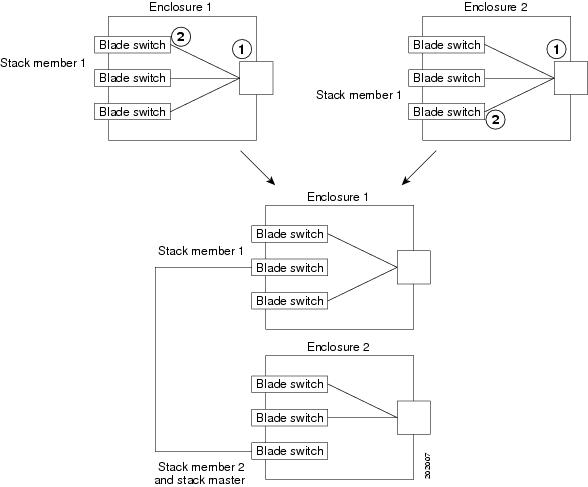
To load the new software:
Reload Slot Stack-member-number Command Linux
Load the new software onto the Commander using TFTP, USB, Xmodem, or equivalent.
Once the new software is loaded, establish a console session with the stack and enter the following command:
HP Stack 2920#: boot systemThis causes the entire stack to be rebooted. Each unit is booted from its image unless you specify otherwise with options to this command. Make sure that you boot from the image to which you downloaded (that is, primary or secondary). If you add a new member to an existing stack, the Commander updates the new switch’s software to match the current stack software. Multiple versions of software are not supported across stack members.
Confirm that the new software has been loaded on each stack member by entering the
member-contextcommand for each member. From the stack member context, view the switch software version that is running on that switch with ashow flashorshow versioncommand.Syntax:
Sets the CLI context so that subsequent commands apply to the specified stack member.
[] Provisioning a switch configures a switch in a stack before the switch is connected into the stack. Once such a switch configuration has been created in the stack, a complete network configuration can be created for it, even if the switch is not physically present in the stack.